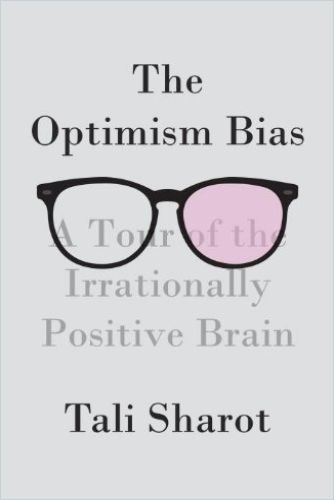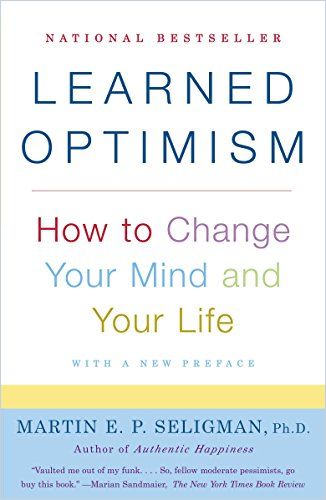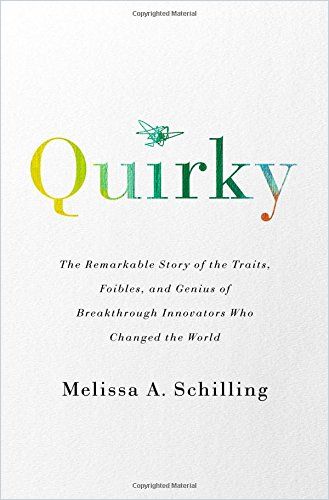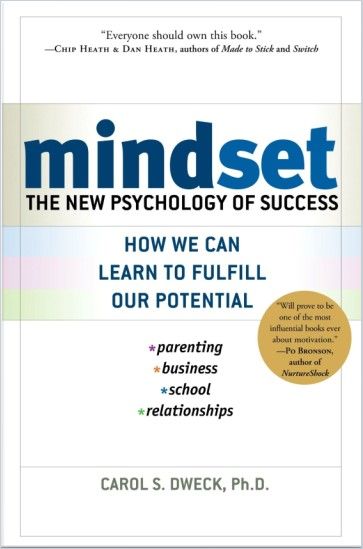The Built-In Superpower

There’s a lot of talk these days about how mind-sets affect your life and work – for better or worse. The “growth mind-set,” in particular, is renowned because it encourages those who have internalized it to learn and achieve more and, above all, to achieve new things. But one thing is often concealed in the process:
To believe and trust in your growth, you need to have a fundamental positive idea of your future. Or, more simply: Only a good portion of optimism allows you to use the power of a growth idea at all.
Because if you believe that everything is evident anyway, the future pre-programmed, out of your hands, you will hardly find a way to think of positive growth – or to put it into practice.
1. You Are Already Optimistic (but May not Know It)
The good news first: You’ve long been an optimist by nature. Your brain ticks optimistic – whether you like it or not.

In The Optimism Bias, neuroscientist Tali Sharot explains that all humans have a built-in “optimism bias” that naturally pushes you to move ahead and not to fall into the depths. Though you know you will die one day, you can imagine an optimistic future and plan for tomorrow. The ability to go forward and backward mentally through time is unique to humans – and to consider your past and wonder about your future helps you see life in a better light so you can stay positive in hard times.
2. How Your Optimism Helps You
Not every day is rosy, and some are downright crappy. It can start with a missed bus, continue with a dismissal – and in the evening, your partner leaves you. There’s no question about it: Strokes of fate are often challenging, and it always takes some time to come to terms with them and realign the compass needle.

But optimistic people succeed faster and better. Or, as Martin Seligman, professor of psychology at the University of Pennsylvania and “inventor” of positive psychology once put it:
Optimistic people…make temporary, specific explanations for bad events, and they make permanent, pervasive explanations for good events.
Martin Seligman
Pessimists tend to think that bad things are permanent and inevitable. Optimists believe the opposite. Optimists may not be right, but they are happier – and it’s worth being optimistic if only for the sake of being happy. To foster your optimism, defeat negative thoughts by:
- Checking the evidence – Put the facts on the side of optimism.
- Consider the alternatives – Instead of seizing the most negative possible explanation, consider positive alternatives that may be equally plausible.
- Look closely at implications – Even if the facts indicate that something bad has happened, the implications may not be so awful. Seek other effects and outcomes.
- Believe what is useful – If a conclusion is useless or counterproductive, especially if it is based on judgment or opinion, discard it. Pick a more useful and constructive idea.
In times of rapid change, many of us struggle with transition and reorientation. In the process, we go through an adjustment process that is sometimes arduous, steels our nerves and makes us feel insecure. The well-known Change Curve shows the different stages of adaptation – and above all the way out of the pessimistic low. Optimism has been proven to help us quickly cross the motivation trough. Optimists are much quicker than pessimists to get over a setback and try again. This means that if you have a fundamentally positive view of the future, you will have fewer problems with adjustments (and setbacks along the way), making your work-life much easier.
3. Rediscovering the Superpower of Optimism
Individual experiences and the resulting world views may not completely rob us of our natural optimism – but they can spill it to some extent. That is, when we paint the world in gloomy pictures, make ourselves worse (and declare ourselves to be worse) than we are. Here are some helpful hints to rediscover what seems lost:
- To interrupt the depression-brewing cycle sparked by negative self-explanation, first become conscious of your thoughts about adversity. When you face adversity, see what consequences your thoughts provoke. Are you inclined to take action or give up?
- Distract yourself by thinking of something else or arguing against the negative thoughts. To divert your attention, combine a physical ritual (snap a rubber band on your wrist or slap the table) with the mental act of arresting your negative or ruminating thoughts. Distraction will immediately refocus your attention.
- You can also render negative thoughts less potent by writing them down and scheduling a time to evaluate them later.
- Better yet, argue against your entrenched thoughts, which can also make them recur less frequently. Unchallenged negative thoughts are draining and debilitating, but disputing them is energizing.
- Construct a persuasive argument based on facts, not on trite, unfounded “feel good” notions with no emotional resonance. When you consider the reason that something adverse has happened, do not latch onto the most awful cause you can imagine.
- Instead, substitute alternative causes that are changeable, specific and impersonal. Use real evidence. Analyze the implications of your thoughts to make them less catastrophic.
- When you vigorously dispute negative beliefs, you’ll feel a new energy, an impulse toward constructive action.

That optimism makes a real difference has been proven many times over. It not only offers productive approaches to the world we live in – it also encourages active action! Real innovators see dysfunctional systems – in food production, energy, health care, education, politics, and more – and devise practical fixes, not in the future but now. They resist standard narratives claiming that established ways are the only ways. The world needs these stubborn, optimistic activists – and here are some of their best success stories:

4. Optimistic People Have a Point
Sure, a lot of things are bad, only half-running, and there’s always murder and manslaughter in the news anyway. Interestingly, however, science is largely in agreement: In human history, most things only ever get better. That means: Optimism is not only a core function of your brain, it can be learned again if it’s buried – and the historical facts, the course of the world, speaks for it. Don’t believe us? Here is proof:

















